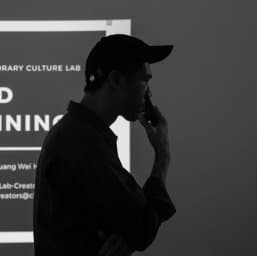The Light and Dust

Overview In the Digital Age, What Are the Possibilities to Preserve the Memory of a Space? The Light and Dust is a VR project, created with photogrammetry as a form of image creation, to make historical images essential elements to reconstruct a space of the past. Changes in the city have been continuously reshaping the urbanscape. Is it possible to propose a way of imagination to envision the future by summoning the memory of a place and make the revisiting feel like one is virtually being there? The project is an attempt to document personal stories and local histories, using 3D scanning and immersive digital devices, and it entails importing 1:1 space models into 3D rendering software for the spaces to be re-programmed and constructed to allow the viewers to experience this virtual realm. The project is about preserving, by the use of digital documentation, the spaces and stories that are about to become historical documents. Concept & Theme "He Guang Tong Chen" (the glare soften and becoming one with the dust) comes from Lao Tzu Chapter 4, shortened from "Blunt the sharpness; Untangle the knots; Soften the glare; Become one with the dust," which connotates softening the light of ones wisdom and virtue and mingling with the mundane world. While moving forward, one is guided by the visual perception, observing the paths available and then the body follows. With the visual framework built around the body and the person placed in the space of the original scale, one would be able to dive into the essence of the soften glare and the dust. That being said, is it possible for one to revisit the traces of life left in the shell of the space once the traces are erased? Analyzing space is a way to recall sensory memories; however, memories cannot be placed in chronical order by "me," who is living in the present. As suggested in The Poetics of Space, it entails spatializing the temporality of memory to trace those unforgettable events, just like the moisture of the wooden floor and slanting sunlight in the afternoon shining through the window can help one, within an orchestrated external environment, recall the background of a fragment of memory. Even though the window lattice or the wooden floor no longer exists, yesterday's experience stays in heart, lingering. Hence, the more noticeable the specialization is, the easier it is to help us transport back to the scene of the unforgettable past event. By employing an immersive digital tool for experience, it allows the viewers to break away from the limitations of the body and space, therefore able to decide on their viewing perspective. With the information of a physical space obtained, representing a missing scape of where the viewer stands, will make revisiting the departed scene possible. Moreover, with the visual framework built around the body, and the sense of direction and the fluidity of the path outlined, it will provide us with more possibilities to relocate those lost scenes, and upon the moment the path is envisioned, one will already be setting his/her foot on the journey at the invitation of the space. Through this process, revisiting a new place is made possible.